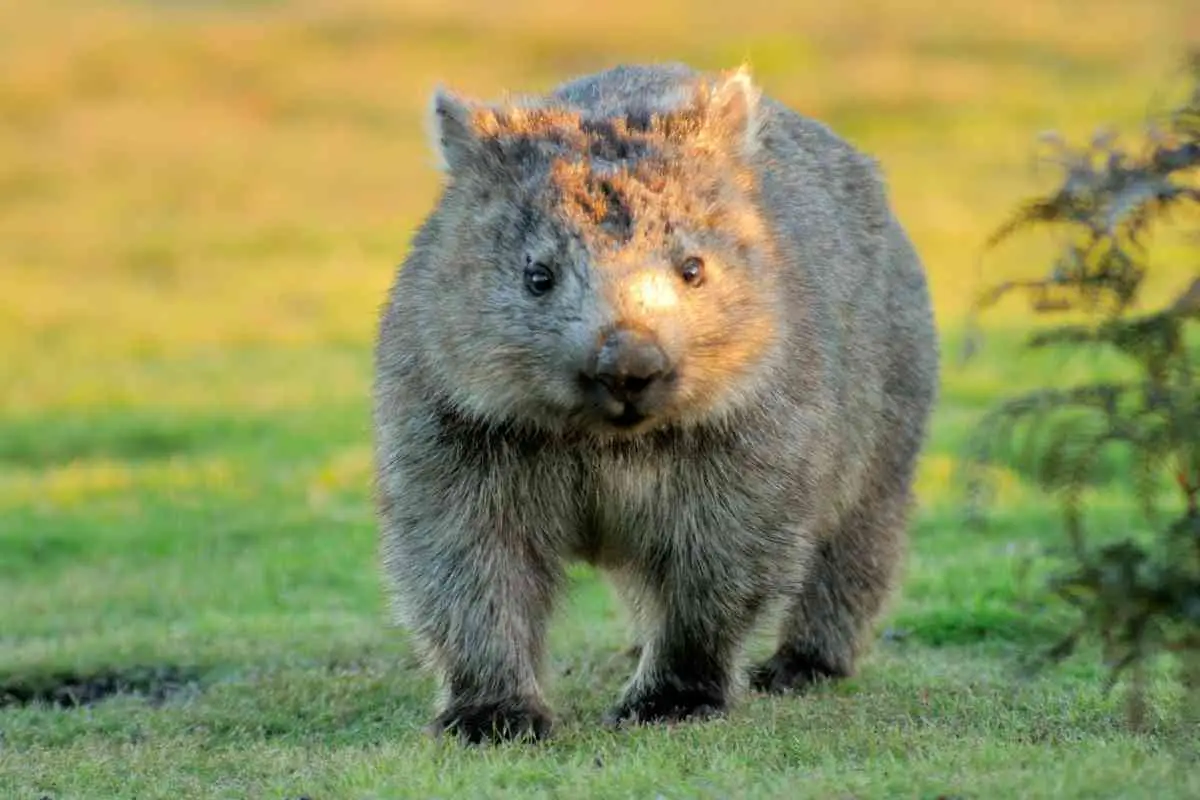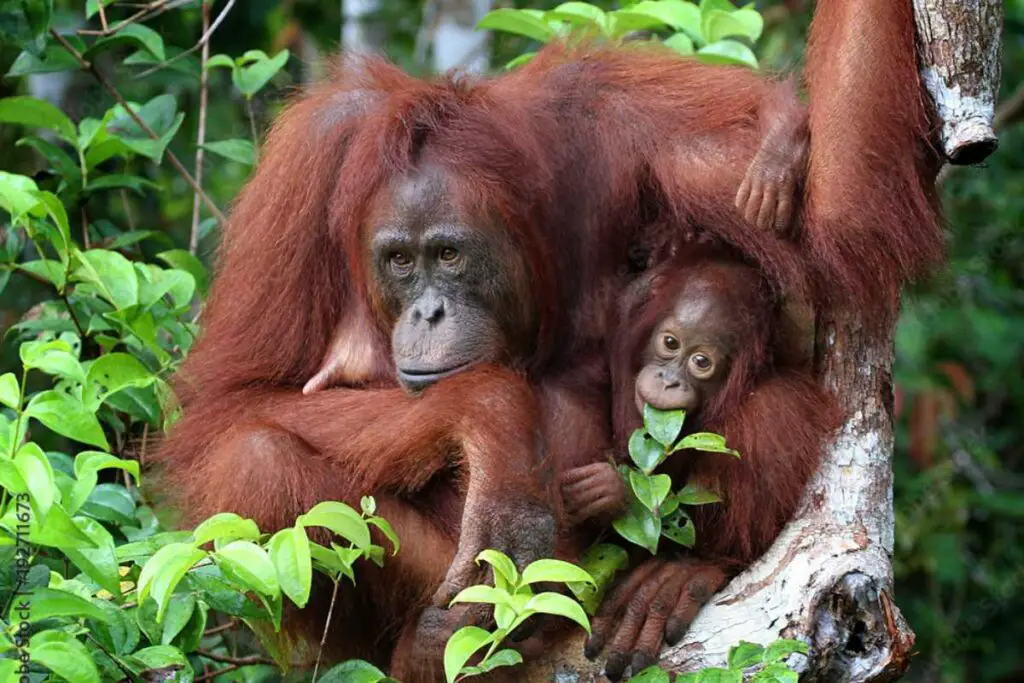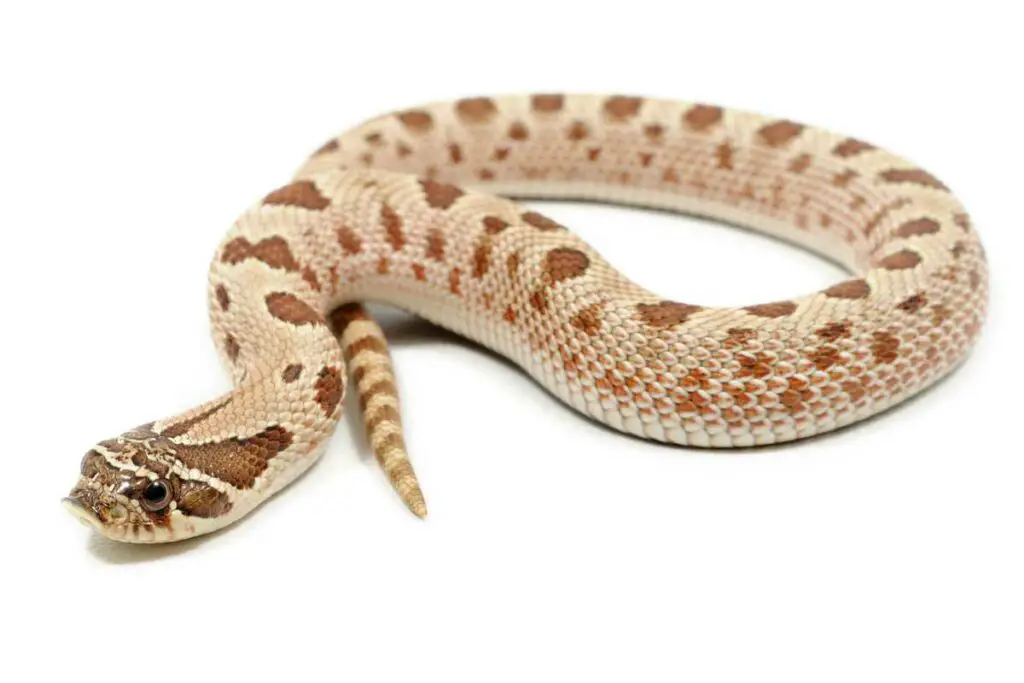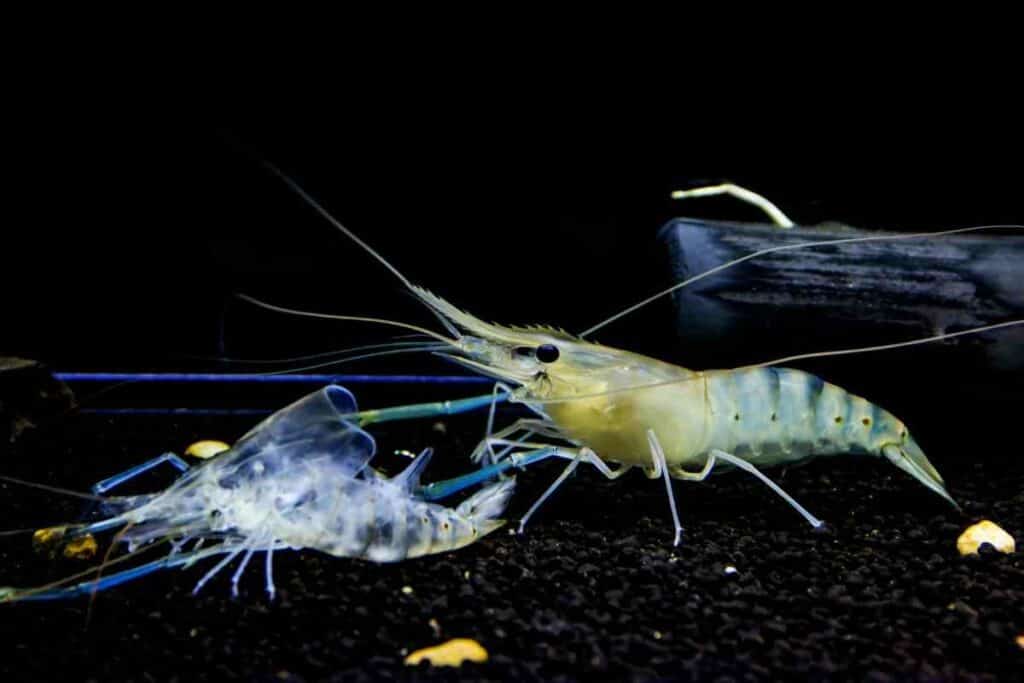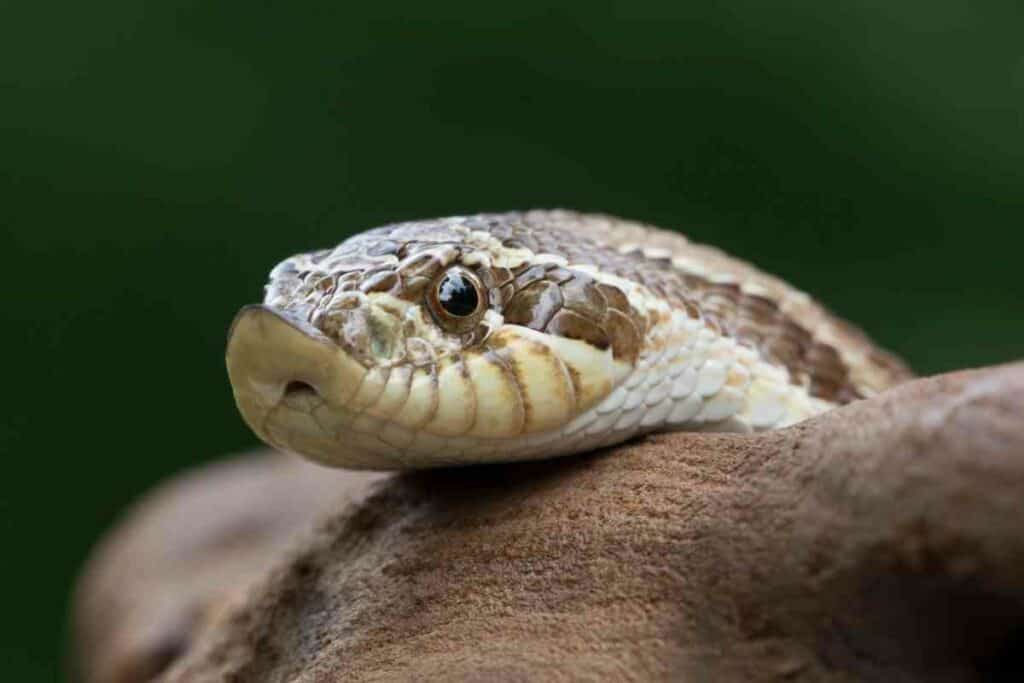The Australian-native wombats look adorably like cuddly little bears.
However, these bulky mammals are actually related to kangaroos and koalas.
Although it lives burrowed under grasslands or hilly woods, a wombat’s earth-toned fur acts as excellent camouflage against predators.
When it comes to a wombat, there is definitely more than meets the eye.
Read on to find more interesting facts about what makes these mammals so endearing yet unique.
Table of Contents
15 Facts About Wombats That You Probably Didn’t Know
Readers are often surprised to hear that a happy-looking wombat harbors quite a temper and can go on a rampage if it feels threatened.
Here we share fifteen more such incredible wombat facts.
1. Just Like Koalas, Wombats Are Marsupials AKA Pouched Animals
Like koalas and kangaroos, wombats are also marsupials.
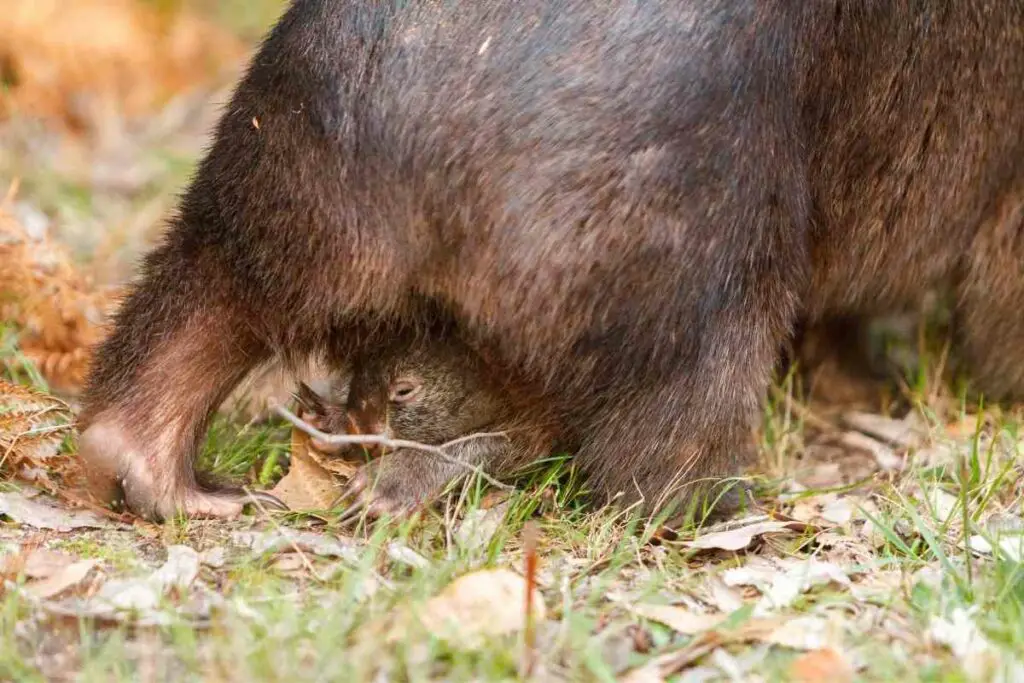
A marsupial is a remarkable mammal that has a pouch. After the gestational period, the wombat babies(joeys) develop fully in the pouch, just like infant kangaroos and koalas.
Once the babies are fully developed, they leave the pouch, frequently returning to feed or when scared – till they can fend for themselves at around seven months of age.
Another interesting fact is that wombats are the second-largest marsupials, coming only second to the magnificent Red Kangaroo.
2. Wombats Have Backward Pouches (For Good Reason)
Wombats are marsupials. Thus, we know that they have a pouch to carry their young ones.
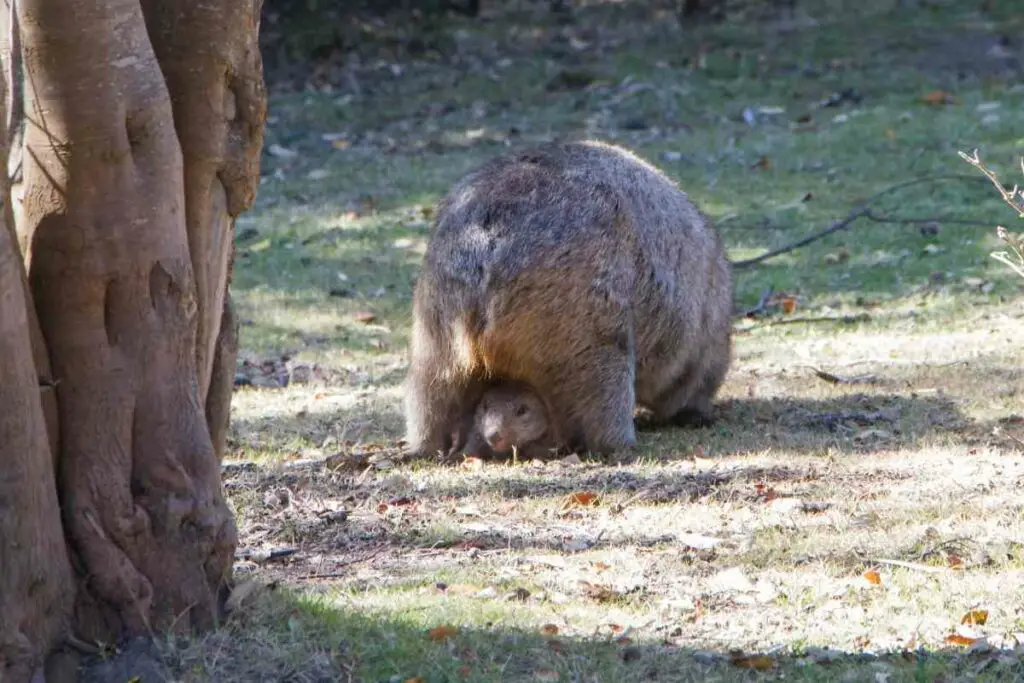
However, unlike the kangaroo, the wombat’s baby-rearing pouch faces backward.
The location of the pouch plays a vital role as it prevents direct from constant soil digging getting on the offspring carried by the female species.
Since digging the ground to make burrows is essential for wombats, the backward-facing pouch ensures the baby stays safe and clean while the mother digs the dirt.
3. Wombats Have Three Species
The wombat species are primarily divided into two main categories based on their nose.
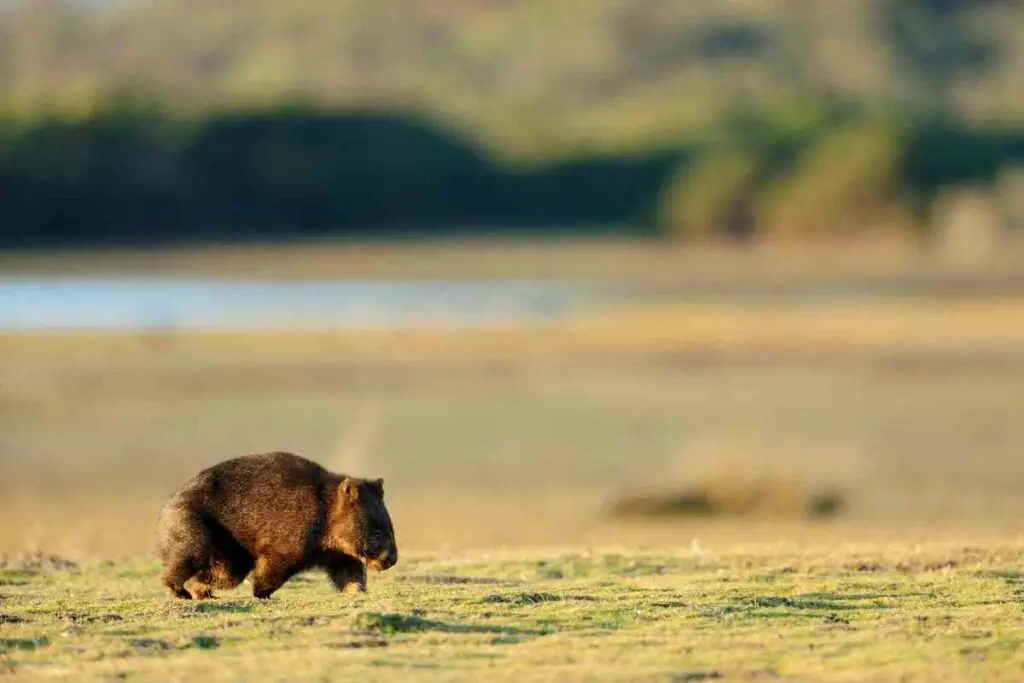
The common wombat is the bare-nosed wombat, whereas the hairy-nosed wombat is further divided into two types:
- the Northern hairy-nosed
- the Southern hairy-nosed wombat
Wombats with a bald nose have rougher hair compared to the silky fur of hairy-nosed wombats.
Out of the three species, the Southern hairy-nosed wombat is the smallest in size.
Some wombats, usually the common species, tend to be loners, whereas their hair-nosed counterparts enjoy company, living in a connected complex of burrows called a “warren.”
Australia (and the island of Tasmania) is home to all three of these species.
Wombats are habitat tolerant, which means that they can survive in various landscapes, including
- woods
- forests
- hilly areas
- and grasslands
4. Wombats Are Nocturnal Animals (Mostly)
Although wombats may venture out to warm up on cold, overcast days, they are generally nocturnal animals, only making their way out of the burrow late in the evening or at night.
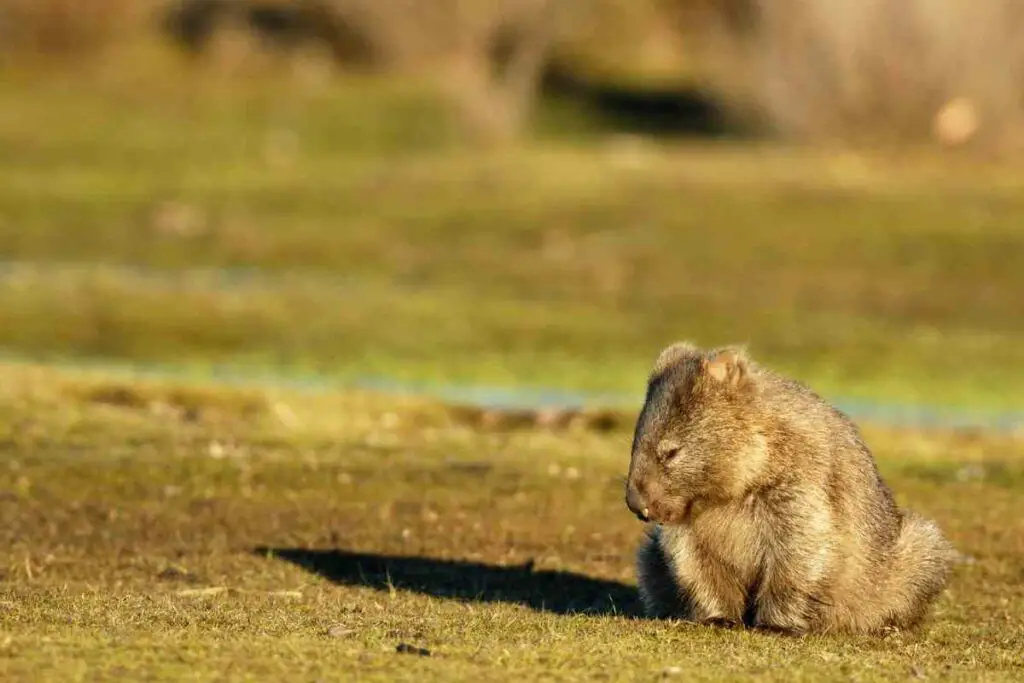
They also cleverly make new entrances and exits to their elaborate burrows, where they spend most of their time.
5. Wombats Are Herbivores
Wombats are herbivores, which means they enjoy a vegetarian diet, mostly feasting upon native grasses after sunset.
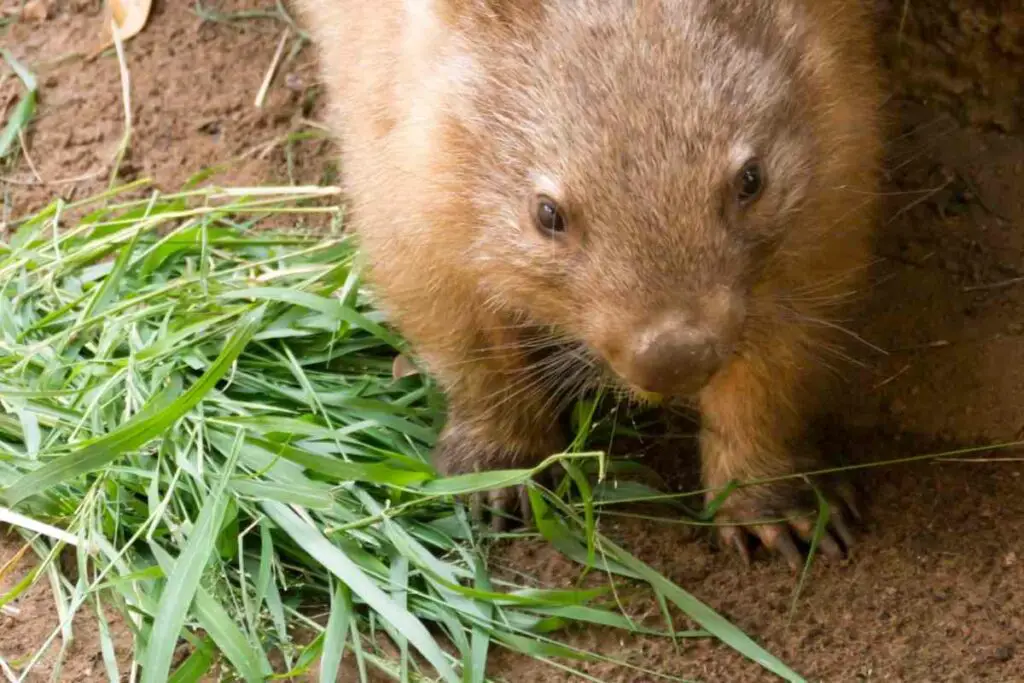
Other wombat favorite foods include sedges, shrub roots, and inner tree barks.
On average, wombats graze for three to eight hours every night to curb their hunger.
6. Complete Food Digestion Can Take Upto 2 Weeks In Wombats
Another distinctive feature about a wombat is the time it takes to digest food.
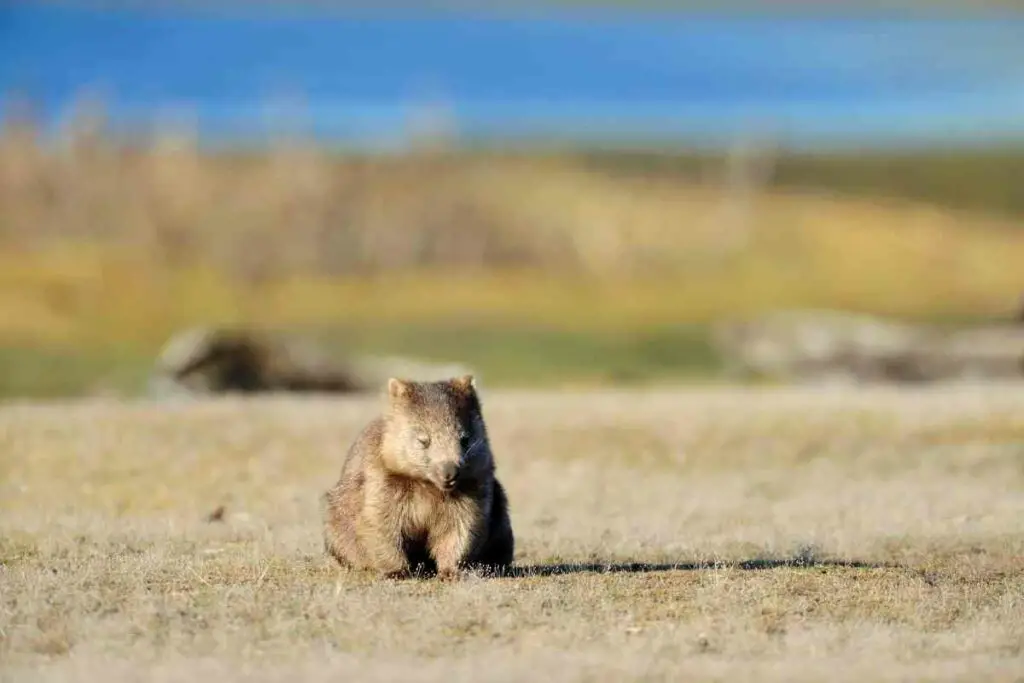
Since a wombat diet mainly consists of highly- fibrous grass, the clever marsupial can take up to fourteen days to completely digest its food.
However, a wombat’s prolonged metabolism aids survival in arid conditions (another feather in the adaptability cap of this marvelous mammal).
Another fantastic fact is that it can take almost two weeks for a wombat to digest its food thoroughly, and its intestines are ten times the size of the body at 33 feet long.
7. Wombats’ Poop is Shaped Like A Cube
Probably the most bizarre fact about wombats is that their poop is cube-shaped.
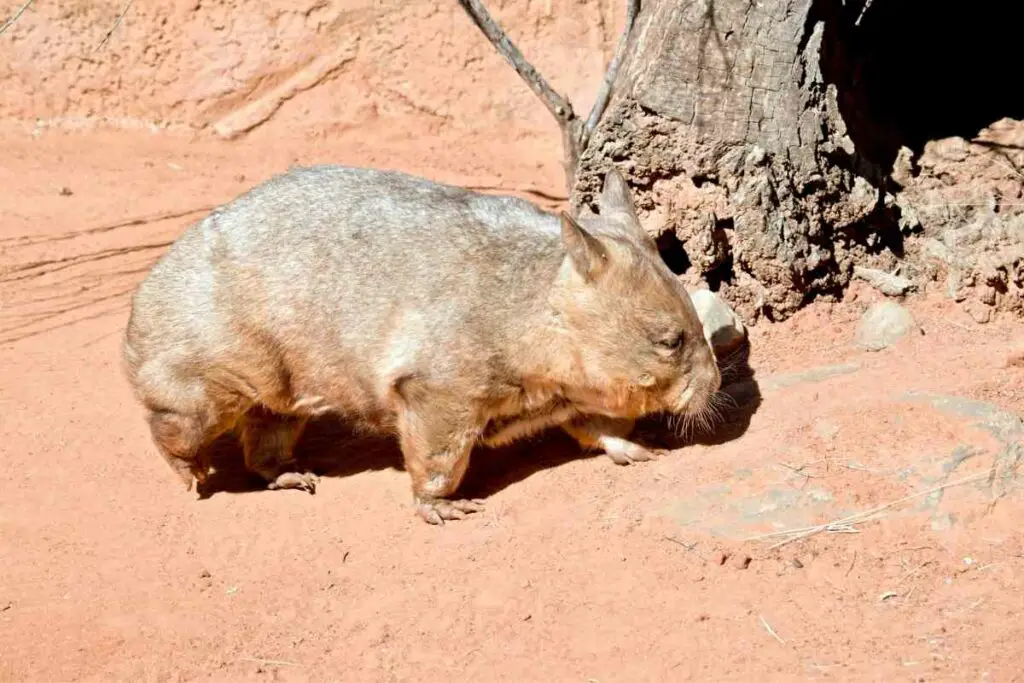
The reason wombats excrete angular feces trumped scientists for a long time.
However, it is believed that cubed shape makes for a steady territory marker (wombats use their poop to make territories), which is not as susceptible to rolling off a hilly or heightened area.
How wombats can pass up to 100 of these cube-shaped feces every night was another mystery.
Since the wombat anus is round like other mammals, research on the intestines attributes this distinctive poop shape to varying elasticity of the final part of the digestive tracts.
8. A Wombat’s Incisors Never Stop Growing
Wombats have strong teeth to tear through grasses, shrubs, and tree roots.
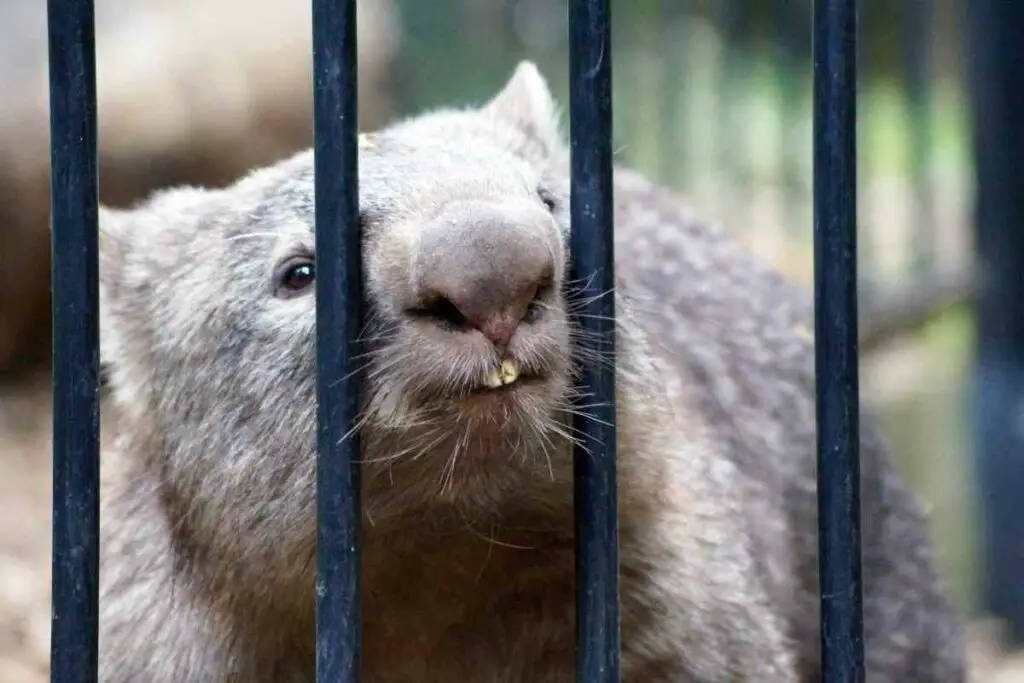
However, their dental prowess isn’t the most impressive thing about them.
What is remarkable is that wombat’s incisors that help in biting and chewing food do not stop growing – ever.
These constantly growing teeth are kept in check as the wombat gnaws on their food, which works well in terms of adaptation since their food is primarily tough vegetation.
9. Adult Wombats Can Be A Metre Long
Wombats look deceivingly small in pictures.
Adult wombats can grow as long as one meter that is 3.3 feet. They are also quite heavy and can weigh up to 40 kilograms.
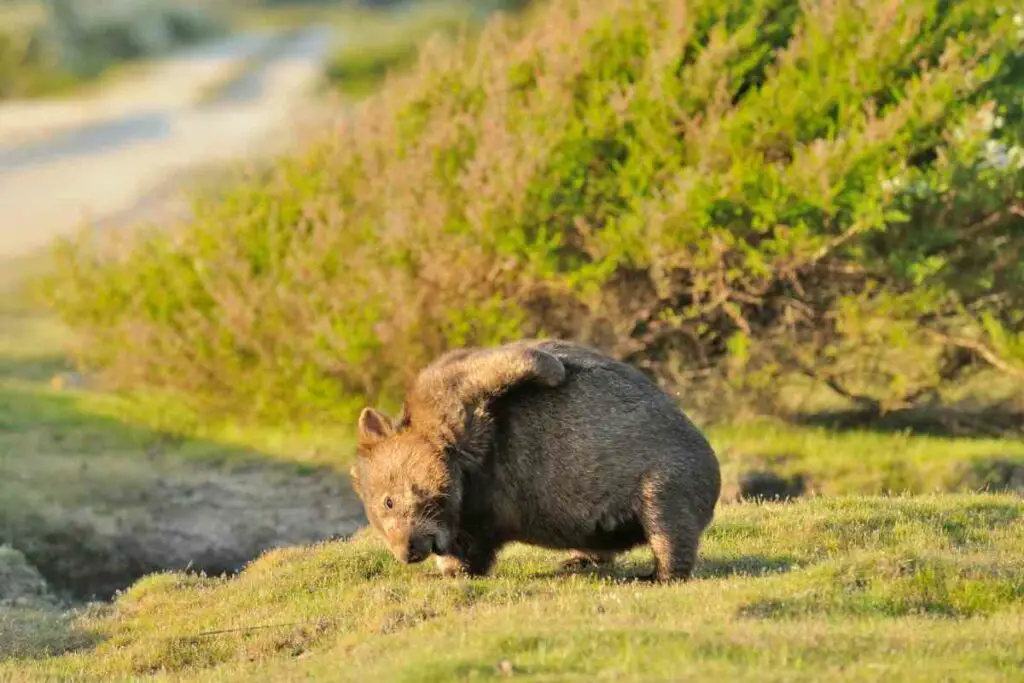
To put things into perspective, an adult wombat could rival a medium-sized dog in height and weight.
A wombat’s body is muscular, despite its comical appearance. The feet are short yet strong, with sturdy foreclaws perfect for digging the ground.
Their small tail makes it difficult for predators to get a hold of them.
10. Wombats Can Run Upto The Speed Of 40kmph
This might come as a surprise (or not), but wombats are pretty fast.
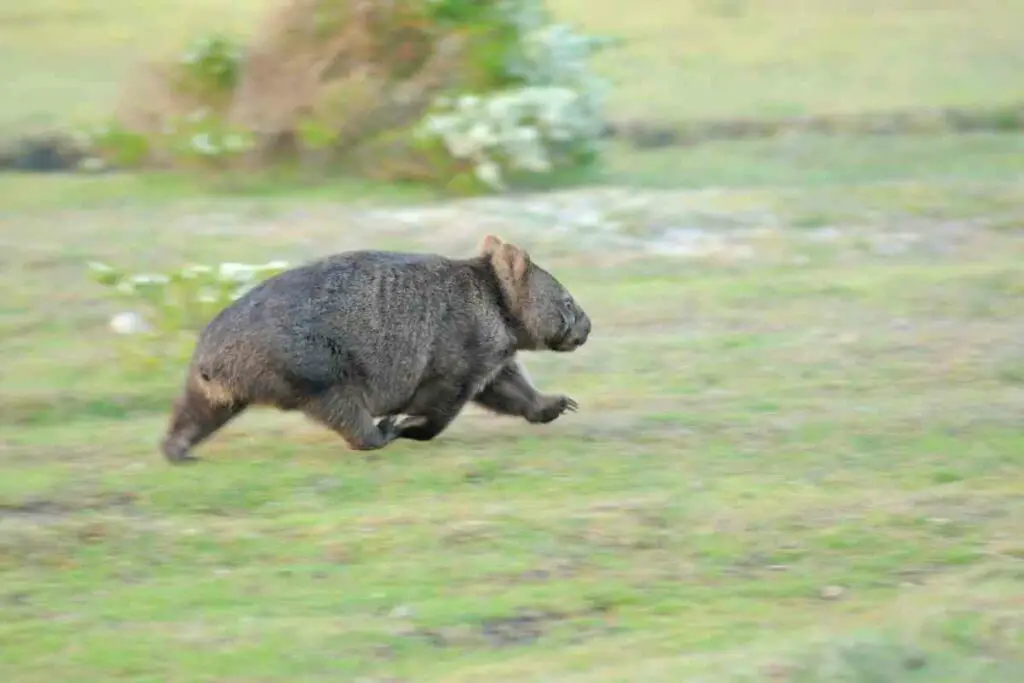
They can run at 40kmph, which is impressive for their build and feet size. A charging wombat can maintain their fastest speed for a minute and a half.
Therefore, when a wombat feels threatened, there is a good chance that they use the speed to knock you over.
Reports of humans getting injured by wombats on a rampage are not uncommon.
11. Wombats Use Their Rumps For Defense
Since a wombat’s rump is almost all cartilage, it is challenging for predators to dig their teeth in to catch these Australian marsupials.
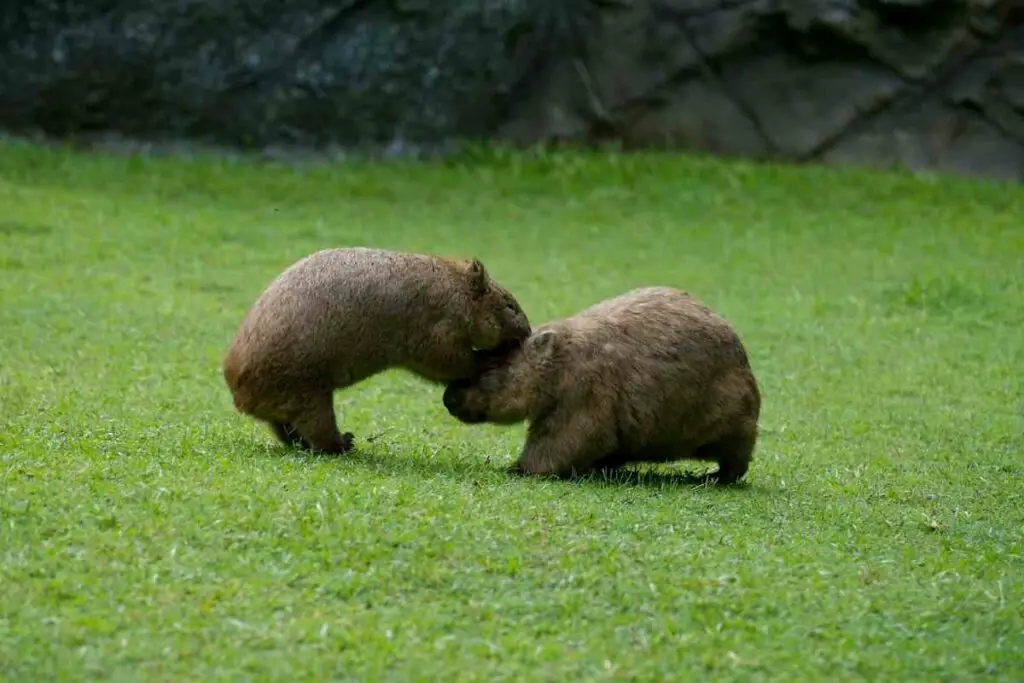
The cartilage rump plus the absence of a long tail makes it difficult for the attackers to catch the wombat.
Moreover, when caught, wombats use their hind legs to kick the attacker as a donkey would.
Usually, a nearby tunnel is safe for the wombat to dive head-first when an attacker is chasing them.
The wombat either blocks the tunnel with its rear or allows the predator to move its head and then crush it with its powerful legs.
12. Wombats Live Longer In Captivity Than In The Wild
According to the San Diego Zoo, wombats live longer in captivity by a few years.
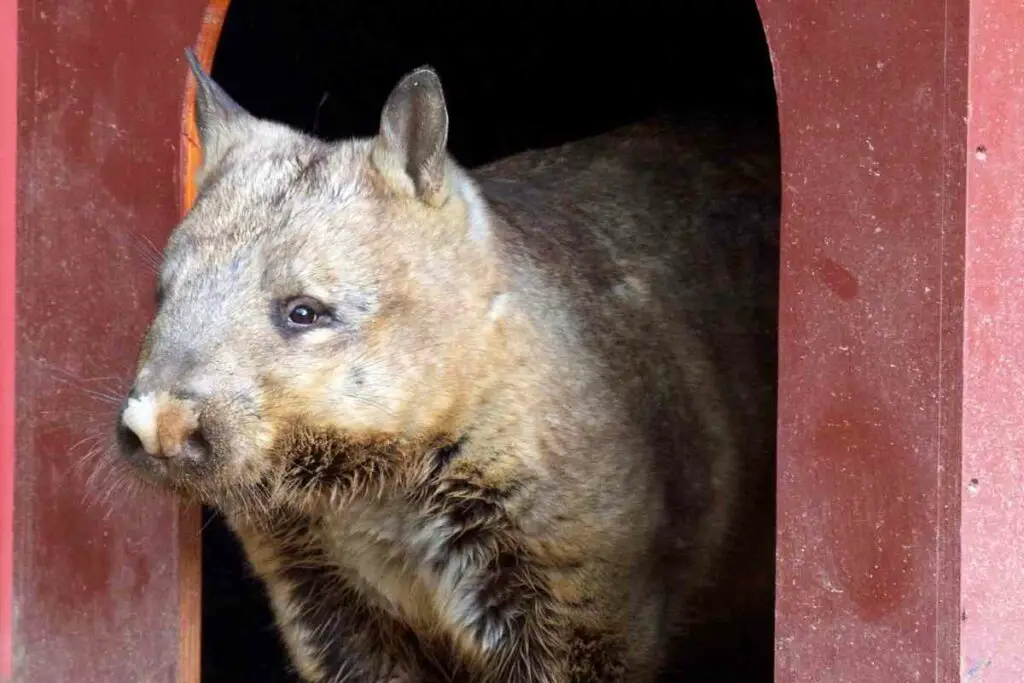
The website states that a wombat’s life span is 5 to 15 years in the wild, while they can live up to 20 years in captivity.
13. Wombat Burrows Act As Makeshift Shelters For Various Animals During Bushfires
Wombats burrows are extensive, built to protect wombats from harsh weather and predators.
Moreover, they help wombats stay cool.
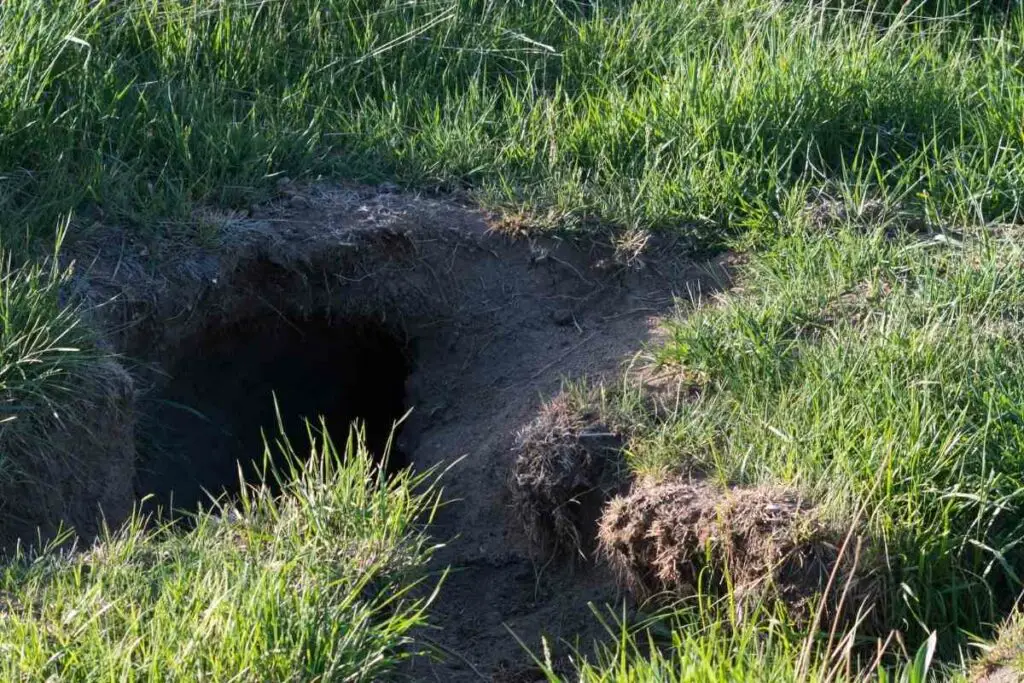
However, warrens ( a burrow colony of sorts) do not only prove beneficial to wombats.
During bushfires, several other mammals use these cool and safe tunnels to shelter themselves.
Rock Wallabies, skinks, and bettongs are some of the few small animals that hide from the flames in the connected burrows – sometimes, they just hide from predators.
14. Australia Was Home To Giant Wombats During The Ice Age
While wombats are by no means minuscule in size, they are no match for a rhinoceros.
However, in prehistoric times, precisely the Ice Age, gigantic wombats as big as rhinoceros resided in Australia.

These giant wombats, called Diprotodon, were almost two meters tall, four meters long, and roughly three thousand kilograms in weight.
These extinct marsupial genera are the largest known mammal of their kind.
Similar to wombats, the Diptrodons used all fours and lived off plant material.
They even had identical-looking jaws with the same number of incisors as the modern wombat.
15. The Northern Hairy-nosed Wombats Is the Endangered Mammal In Queensland
According to a 1980s survey, there were only 35 hairy-nosed wombats left in Queensland at the time.
The near-extinction of this mammal was chalked up to droughts and dire food shortages, which forced them out of their natural habitats.
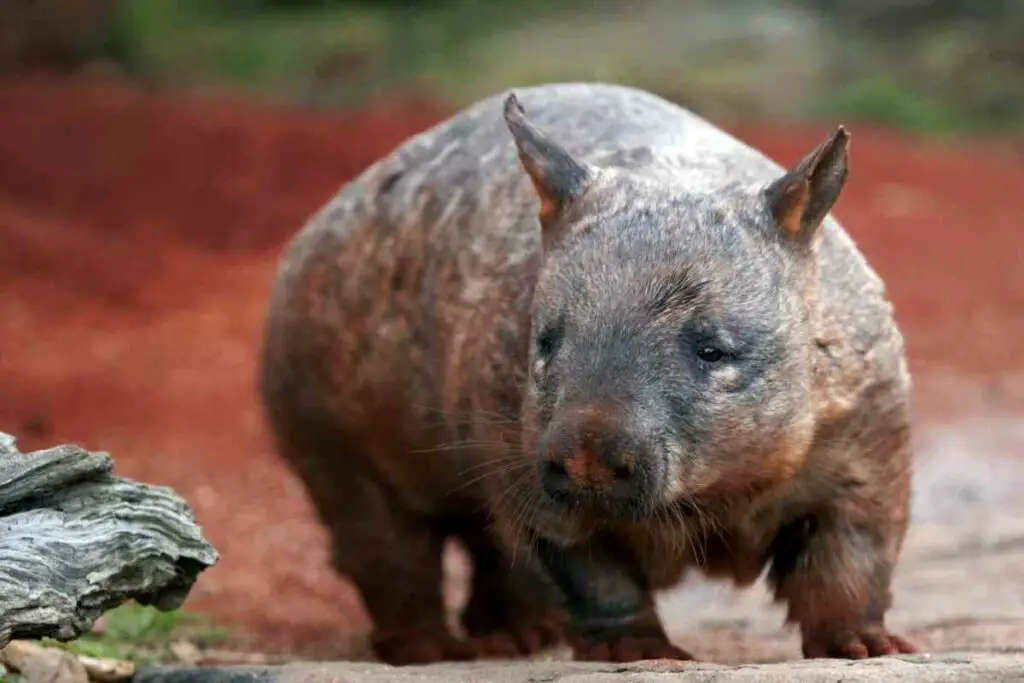
Now, in two Queensland locations, conservators are finally celebrating bringing these marsupials back from almost extinction.
As of now, over 300 Northern hairy-nosed wombats are found in Queensland.
Breeding small mammals is no easy task (wombats only produce a single offspring every two years).
Still, with their natural ability to reproduce, conservators are hopeful that the particular wombat population will keep on increasing till it’s entirely out of danger.
Final Thoughts
Wombats are genuinely unique mammals with distinctive characteristics like rump cartilage and cube-shaped poop.
However, please do not get fooled by their cuteness; these cuddly mammals pack a punch and are well equipped to fight off predators and any incoming threat, for that matter.
With powerful hind legs and strong jaws, these cuddly mammals are best viewed from afar – unless you want to risk a nasty bite.

